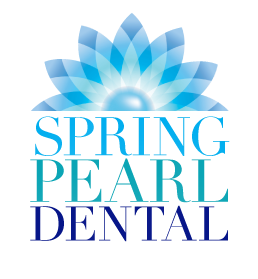24504 Kuykendahl Rd. Ste 400 | Tomball, Texas 77375 | (281) 651-2782
Sleep Studies & Sleep Apnea
What to Expect During an At-Home Sleep Study
An at-home sleep study is a simple, convenient way to evaluate your sleep and check for signs of sleep apnea or other sleep-related issues—all from the comfort of your own bed.
Here’s what typically happens:
1. You Receive the Sleep Study Kit from Our Office
You’ll pick up your testing kit from our office. The kit includes easy-to-use equipment and detailed instructions. Of Course, ask Dr. Mac if you have any questions before you start.
2. Set Up Before Bed
Each kit is slightly different, but ours include a simple finger sensor to track oxygen levels.
Setup usually takes less than 10 minutes, and we’ll provide step-by-step guidance to make it easy. Some kits may include a short instructional video or app-based support.
3. Sleep As You Normally Would
Once you’re connected to the device, just go to sleep as usual. The equipment records data throughout the night, but it won’t actively disturb your sleep. Wear it for 4 or 5 nights so we can see your sleep patterns.
4. Return the Equipment
After the test, you’ll return the device to our office. Once we receive it, we’ll download and review your results.
5. Results & Next Steps
We’ll schedule an in-office sleep test results appointment with you. Dr. Mac will review the data and share with you the results and potential treatment options, if they are needed.
If you have any questions before or during your home sleep study, we’re always here to help. Call us - (281) 651-2782 - We want to make sure you’re comfortable, confident, and informed every step of the way.
“Our Patients love us. Check our reviews! ”
Why is Sleep Apnea such a big deal?
Sleep apnea is a big deal because it doesn’t just disrupt your sleep—it quietly puts your long-term health at serious risk. Here's why it's so important to take it seriously:
1. It Strains Your Heart and Brain
Every time your breathing stops during sleep, oxygen levels in your blood drop. This puts stress on your cardiovascular system and increases your risk for:
High blood pressure
Heart disease
Irregular heart rhythms (arrhythmias)
Stroke
Over time, these repeated oxygen drops can cause or worsen serious conditions, even if you feel “fine” during the day.
2. It Wrecks Your Sleep Quality
Sleep apnea prevents you from reaching the deep, restorative stages of sleep your body and brain need. You may not fully wake up during episodes, but your body keeps getting pulled out of rest. This leads to:
Chronic daytime fatigue
Memory and concentration problems
Mood changes like irritability or depression
3. It Affects Your Metabolism and Weight
There’s a strong link between sleep apnea and weight gain. Poor sleep throws off hormones that regulate hunger and metabolism. Sleep apnea also raises the risk of type 2 diabetes and makes it harder to manage blood sugar levels.
4. It Increases the Risk of Accidents
Sleep apnea can leave you dangerously drowsy during the day—even if you think you're getting enough rest. This increases your risk for:
Car accidents
Workplace mistakes or injuries
Slower reaction times
5. It’s Often Undiagnosed
An estimated 80% of moderate to severe cases go undiagnosed, meaning millions of people are living with the consequences of untreated sleep apnea—without realizing it.
The Good News:
Sleep apnea is treatable. With the right diagnosis and care, many people see dramatic improvements in sleep, energy, mood, and long-term health.
What are the severity levels of sleep apnea?
Healthcare providers use the apnea/hypopnea index (AHI) to determine the severity of a sleep apnea diagnosis. The AHI measures the average hourly number of apnea (when you stop breathing while asleep) and hypopnea (decreased airflow) events. The severity levels of sleep apnea are:
Mild sleep apnea (AHI 5-14 events per hour)
Moderate sleep apnea (15-29 events per hour)
Severe sleep apnea (30 or more events per hour)
Some Helpful Links:
Sleep Apnea Overview (The Cleveland Clinic)
The Dangers of Uncontrolled Sleep Apnea (Johns Hopkins Hospital)
I May Have Obstructive Sleep Apnea. Now What? (Vivos Institute)

